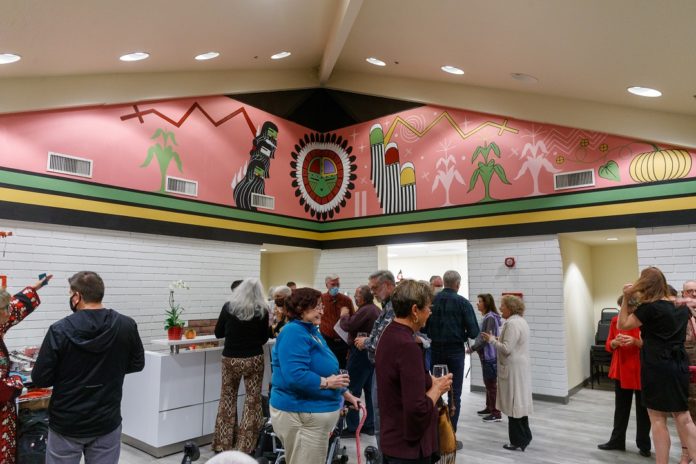The Verde Valley Archaeology Center and Museum grand opening on Nov. 26 was an emotional affair for VVAC Executive Director Ken Zoll and his wife Nancy. After thanking the donors that enabled the center to open, the two were astonished by the reveal of a plaque, soon to be placed at the front of the building: The nameplate dedicates the new location at 460 Finnie Flat Road in Camp Verde to the Zolls.
Among the donors that helped VVAC move to its new location at the old Verde Valley Medical Center were philanthropic partners, members of the board of directors and founders of the original Center. In addition to the donors, the new 11,000-square-foot facility was financed by the U.S. Department of Agriculture’s Rural Economic Development program, with interim funding from the Arizona Community Foundation.
“A couple of us have done administrative stuff, but we couldn’t have done any of it without the donor support,” Zoll said. “We wouldn’t be here without it.”

The new facility has 12 public gallery spaces, a state-of-the-art meeting and events room, an augmented reality children’s adventure room, a collections repository and a curation laboratory and data center. The center has plenty of extra room for staff offices, and a library for VVAC members — consisting of over 2,000 books and periodicals.
The welcoming lobby entrance features a mural by Hopi artist Duane Koyawena, and is a testament to the connection the Hopi people have to the Verde Valley.
VVAC is working to preserve artifacts not just as a means of celebrating culture, but also for scientific discovery and research. One example of this is the human remains room, which will be used for the safekeeping of remains prior to Tribal consultation.
In 2014, developers conducting an archaeological investigation uncovered a pit house village and burial plot.
“I called them up and said, ‘you know, you had one burial in there and it cost you $150,000,’” Zoll said. “How about if we go in there and respectfully take care of it for you …. It will be a learning experience for us and we will get some collection.”
Zoll said VVAC was originally started in 2010 because they noticed there wasn’t anywhere even close to the area where people could view, let alone study, American Indian artifacts.
“I can’t tell you the number of people — ‘pros’ — who said ‘No. 1: It’s expensive, No. 2: It’s time-consuming, No. 3: You will never get the volunteers … so you might as well just forget the whole thing,’” Zoll said. “But we started doing it, and here we are.”
Zoll expressed his deep appreciation for the donors of the center by naming many of them, as well as dedicating specific rooms preservation of the over 80,000 artifacts, textiles and remnants stewarded by VVAC possible.
A significant portion of the Center’s collection of artifacts is the Dyck Cliff Dwelling Collection.
More than a half-century ago, archaeologist Dr. Charles Rozaire began an excavation project at a small Southern Sinagua cliff dwelling located on artist Paul Dyck’s Rimrock property. Artifacts from the site remained in storage until 2014, when they were donated to VVAC by the Dyck family.
Now, they will be available for viewing by all in the Paul Dyck Collection Center at VVAC.
VVAC brings to Camp Verde a glimpse into a deeper understanding of prehistory and American Indian history. The Center is the only organization in the Verde Valley region dedicated to the care, management and curation of archaeological artifacts.



